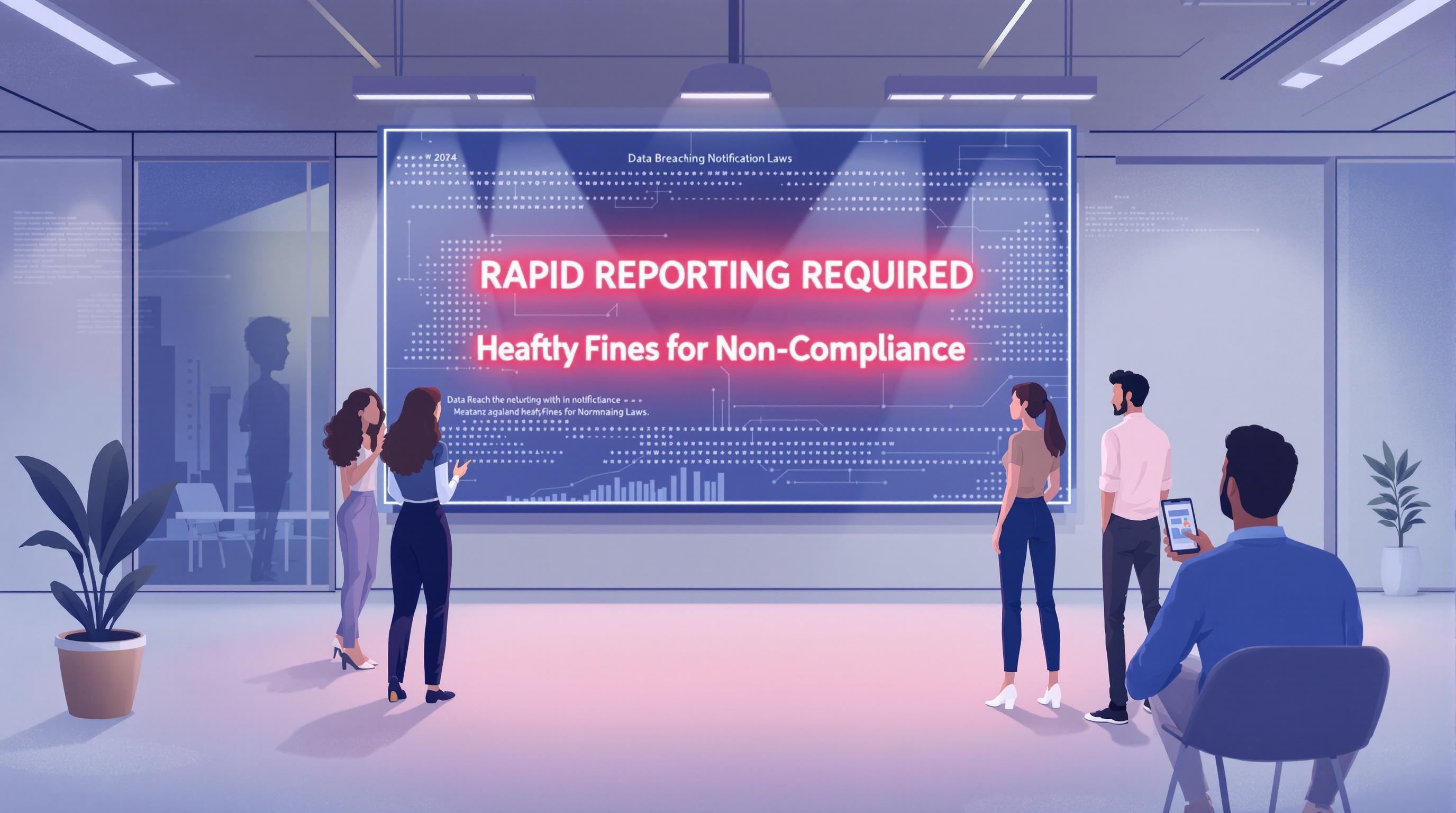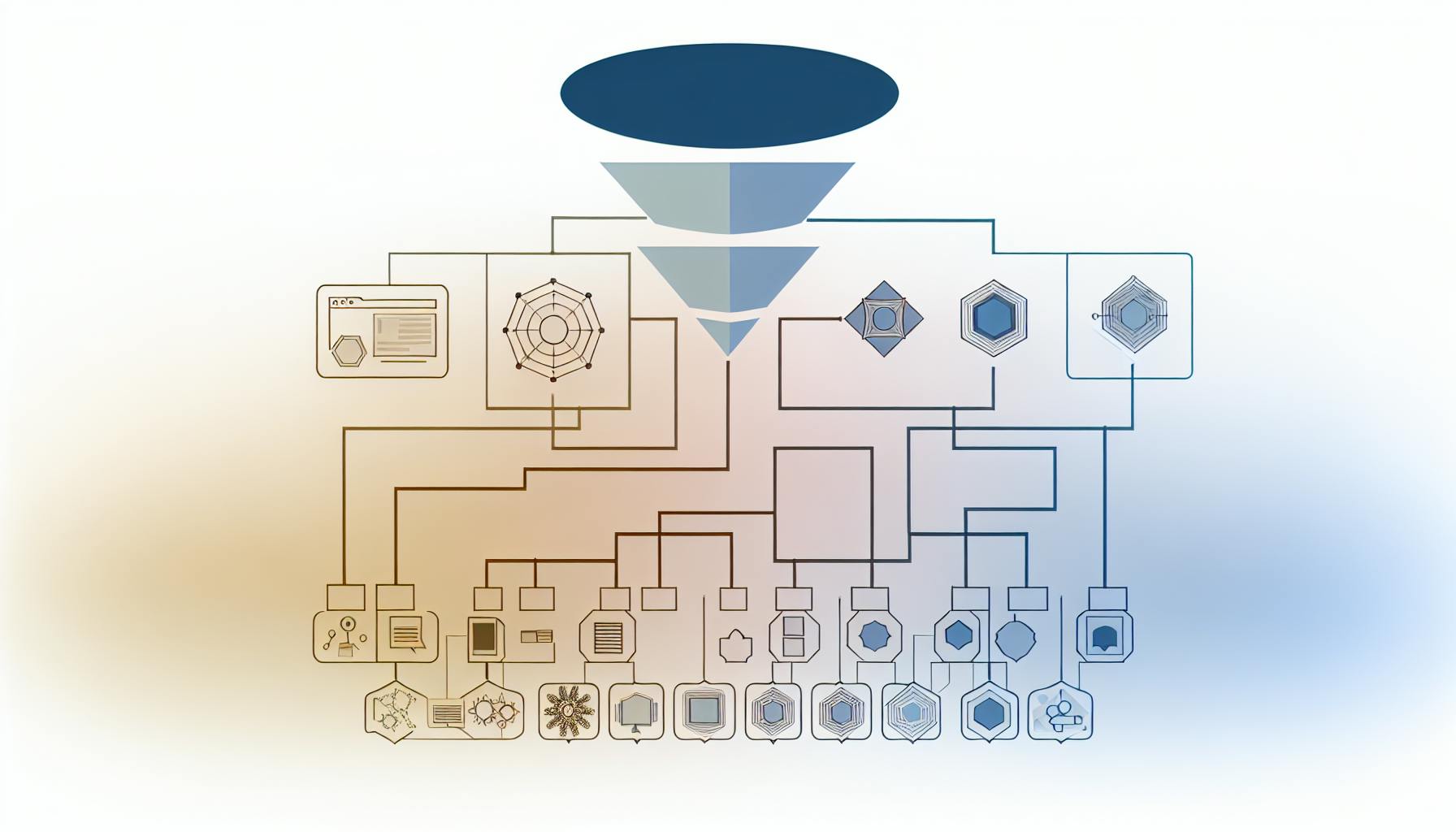In today's digital age, the convergence of big data and cyber security is creating powerful defenses against the increasingly sophisticated and frequent cyber threats. Here's what you need to know:
- Big data analytics can vastly improve our ability to detect, respond to, and even predict cyber threats, saving time and money.
- Cybersecurity challenges are growing, with advanced threats and high-volume attacks putting businesses, especially those handling massive customer data like SaaS companies, at risk.
- The power of big data analytics lies in its ability to process and analyze vast amounts of diverse data quickly, spotting anomalies and patterns that indicate threats.
- Implementing big data and AI in cybersecurity involves overcoming data management and analysis challenges but can lead to significantly improved detection and response times.
- Future prospects suggest that as technology advances, big data analytics will become even more integral to cybersecurity, with expanding IoT integration, increased threat intelligence sharing, and advancements in machine learning.
Understanding and leveraging the synergy between big data and cybersecurity is essential for businesses to protect against and mitigate the impact of cyber attacks effectively.
Increasingly Complex Threats
- Advanced persistent threats (APTs) - These are sneaky attacks that get into networks and stay there without being noticed. They can use unknown weaknesses in software or special malware.
- Zero-day exploits - These are attacks that take advantage of software problems that no one knows about yet. They're hard to stop because there's no fix available at the time of the attack.
- Ransomware - This is a type of bad software that locks up your data and asks for money to unlock it. In 2021, there was a ransomware attack almost every 11 seconds.
High Volume Attempts
- The number of ransomware attacks doubled in 2021 compared to 2020.
- Big companies can face billions of malware tries in a single day.
- DDoS attacks, which overload websites with too much traffic, went up by 282% in 2020. The biggest one hit 17.2 million requests per second.
- According to Verizon's 2022 Data Breach Investigations Report, phishing (tricking people into giving up personal information) went up by 55% since 2020. 82% of data breaches involved some kind of human mistake, like falling for a phishing scam.
With more and more data being collected from online devices, networks, and other sources, SaaS companies have a tough job keeping customer data safe from these growing and changing threats. Using big data analytics and AI (Artificial Intelligence) can help them get better at finding, predicting, and responding to these threats.
The Power of Big Data Analytics
Big data analytics is a big help in cybersecurity because it lets us find and respond to threats fast. By looking at a lot of information from different parts of our computer systems and networks, security teams can get a better picture of where dangers might be coming from and catch attacks that are just starting.
Valuable Data Sources
There are lots of types of data that can help figure out security problems when we put them all together and study them:
- Machine data - This includes logs from systems, applications, and networks that show everything that's happening. It helps find strange behaviors and signs of attacks.
- Network data - Records of network activity that can show threats like stolen data or harmful botnet communications.
- Access data - Logs that keep track of who's trying to get into the system and what they're doing. This can catch stolen passwords and unauthorized access.
- Usage data - Information on what files and data users and systems are looking at. This spots unusual and suspicious activity.
When we bring all this data together, security teams have a full record of what's going on across the IT environment. Then, using advanced analytics, they can pull out important signs of threats.
Advanced Techniques
Using special methods to study the data helps in finding and stopping threats:
- Anomaly detection - This method uses machine learning to learn what normal activity looks like and then flags anything that doesn't match. This quickly points out odd user actions, network traffic, or system usage.
- Predictive modeling - This approach uses algorithms to guess the likelihood of different events, like whether a user session or file access might be risky. This helps stop threats before they happen.
- Relationship mapping - This method looks at how users, computers, and data are connected. It helps find patterns and links in attacks.
By using these methods together, security teams can more accurately and proactively warn about threats, which means they spend less time on false alarms and more time dealing with real dangers. This makes it harder for attackers to succeed with their sneaky, complex attacks.
Integrating Big Data and AI
eyer.ai

eyer.ai is a tool that uses AI to keep an eye on everything happening in SaaS companies. It uses big data and machine learning to watch over the technology and people using it, making sure everything runs smoothly and safely.
Here's how eyer.ai makes things safer and more reliable for SaaS companies:
- Gathers and looks at a ton of data from different parts of the SaaS setup. This includes info on how much computer power is being used, how much memory is being taken up, how fast requests are handled, how many errors are popping up, and what users are doing.
- Uses machine learning without being told exactly what to do, to figure out what's normal and what's not. This way, it can quickly spot when something odd happens that might mean there's a problem or a security threat.
- Finds out how different parts are connected to see how an issue in one area can affect others. This helps figure out the root cause of problems faster.
- Uses advanced AI to tell the difference between normal oddities and real issues that need attention. This helps cut down on unnecessary alerts.
- Makes it easier for different teams to work together by sharing data about detected oddities, helping them respond to issues faster.
- Explains the AI's decisions in a way that's easy to understand, building trust in the system.
- Shares useful insights through easy-to-use tools for developers, making it simple to add this technology into their work.
In short, eyer.ai combines big data, smart analytics, and AI to help SaaS companies keep an eye on their systems. It spots problems early, protecting against things that could mess up the customer experience, cause downtime, or harm the company's reputation.
Overcoming Implementation Barriers
When teams start using big data analytics for security, they might run into some bumps. But, by sticking to good practices in handling data, making sure analytics are on point, and working well together, they can make it work.
Data Management Strategies
To handle and make sense of a lot of security data:
- Think about using data lakes or data hubs to bring different bits of data together in one place. Make sure to organize this data well so it's easier to work with.
- Use tools like Apache Kafka for dealing with data that's constantly being updated, so you can keep up in real-time.
- Use cloud services to store and process big data without bogging down your own computers.
- Set rules on who can see data, how long to keep it, how to protect people's privacy, and when to delete it.
- When working with sensitive data, hide personal details to stay within privacy laws but still analyze the data.
- Regularly check that your data is correct and up-to-date to make sure your analytics are reliable.
Ensuring Analytic Accuracy
To make sure your security checks don't give wrong alerts or miss new threats:
- Keep updating your machine learning tools with fresh data so they can learn the latest attack patterns.
- Test different algorithms on the same data to see which one works best.
- Look at stats like precision and recall to really understand if your models are doing a good job.
- Have a human check the machine's work before acting on it to avoid mistakes.
- Let analysts mark any wrong predictions to help improve the machine learning models.
- Keep track of threats over time to notice any new patterns or changes.
Working closely between security, data, and IT folks is crucial to get past the tricky parts of big data analytics. With a careful, test-driven approach, companies can really benefit from the security insights hidden in their data.
sbb-itb-9890dba
Case Studies
Let's look at how two companies, a bank and a cloud software provider, used big data to fight cyber threats more effectively. These stories show how using smart technology can make a big difference in catching and stopping cyberattacks.
Financial Services Firm
A big bank wanted to get better at finding and dealing with cyber threats quickly. They decided to use a smart system that watches over network traffic, which helped them to:
- Collect different types of data from their network to keep a closer eye on what's happening.
- Use machine learning, a type of artificial intelligence that learns from data, to understand what normal activity looks like and spot anything unusual.
- Find threats in real-time by noticing when things don't match up with what's expected, helping to catch hackers or internal problems.
- Give clear alerts to their security team so they could act fast, with details on what's going wrong.
Results:
- They started finding breaches 62% faster, reducing detection time from 47 days to just 18 days.
- They got quicker at responding to threats, improving their response time by 57%.
- They saved $412,000 a year because their security team could work more efficiently.
By using AI and machine learning to understand their network data better, the bank significantly improved how quickly and effectively they could respond to threats.
SaaS Provider
A company that offers cloud-based services to businesses was having trouble with hackers trying to take over customer accounts. They set up a system that analyzes how users typically interact with their services, which allowed them to:
- Bring together user activity data from different cloud services.
- Create profiles for each user to see how they usually use the system and spot any strange behavior.
- Quickly find and deal with unusual activity that might mean someone's account is at risk.
- Send out alerts and take immediate action, like turning off suspicious accounts to check them out.
Results:
- They found 32% more hacked accounts than before.
- They cut down the time to stop account takeover attacks by 73%, from 4 days to just 1 day.
- They were able to protect accounts faster, reducing the impact on their business and customers.
Using big data and analytics helped them keep a better watch on how accounts are used, making it easier to catch and stop attacks on customer accounts quickly.
The Future of Big Data-Driven Security
Big data analytics is already helping us fight cyber threats better, but there's still a lot of new stuff coming up. As bad guys get smarter, we also need to get better at using data to stop them. Here are three big ways big data analytics will help us do that.
Expanding Internet of Things (IoT) Integration
Nowadays, we have more devices connected to the internet, like in our homes, cars, and factories. These devices create a ton of data that can help us spot security problems. By analyzing this data, we can connect the dots between weird behaviors on these devices and other security issues. Also, with faster 5G networks, we can quickly check for threats across many devices in real-time.
Increased Threat Intelligence Sharing
There are platforms that let security teams share details about new cyber threats. This helps everyone get a better idea of what dangers are out there. Soon, we'll use automation to make this data sharing faster, helping teams act quickly. We might also use technology like blockchain to make sharing safer and more reliable.
More Advanced Machine Learning
Machine learning helps computers learn from data to spot threats. We're starting to use more complex types like deep learning, which can understand complicated patterns better. This means our security tools will get even smarter at stopping cyberattacks before they happen. Plus, security teams will have better tools to look into threats and work together more efficiently.
Conclusion
As we connect more devices and face smarter cyberattacks, big data analytics is becoming even more important. We need smarter ways to gather, analyze, and react to security data. The upcoming changes will make our security tools quicker, smarter, and able to handle more information, which is exactly what we need to stay safe.
Conclusion
With more cyber threats popping up all the time, using big data to help with cybersecurity isn't just a good idea, it's something we really need to do. There's so much security information being made every day that it's too much for people to handle on their own. Without big data tools and the help of AI and machine learning, we're likely to miss threats, which can leave businesses open to attacks.
But just having big data tools isn't enough. To really make a difference, businesses should:
- Look at the big picture when it comes to security. This means taking in data from all parts of their computer systems to get a full view of potential threats.
- Use smart methods like spotting unusual activities, predicting future threats, and figuring out how different security issues are connected. This helps find dangers that might not be obvious.
- Keep improving and adjusting their tools to stay on top of new threats. Having people work alongside AI helps catch mistakes or biases that the AI might have.
- Make sure their security, data, and IT teams work well together. Using platforms that help share information and coordinate actions can make this easier.
- Handle the huge amount of data properly. This involves organizing, processing, and managing all the security data in a way that makes sense and is manageable.
Looking ahead, there's a lot of potential for making things even better. Connecting more with IoT (Internet of Things) devices will help us see new kinds of threats, while sharing information about threats faster can help everyone react quicker. As the technology for machine learning and AI gets better, these systems will be able to make smarter decisions on their own, while still having people check their work.
In the fight between those trying to protect against cyber attacks and the attackers themselves, big data gives us a way to fight back. But it takes careful planning, teamwork, and ongoing effort to make the most of it. With the right approach, businesses can use their data to spot and stop cyber threats before they cause problems.
Related Questions
How does big data help cybersecurity?
Big data analytics gives cybersecurity teams extra data and smarter ways to find threats early and deal with them quickly. By collecting data from all over the computer systems and using smart methods like spotting odd behavior and mapping relationships, problems can be found earlier, preventing big damage. Big data tools also help link related threats to see bigger attack plans.
What security opportunities does big data bring to the security industry?
Big data lets the security industry get ahead of threats by predicting them, not just reacting. By knowing what normal behavior looks like, it can spot new and unknown attack methods quicker. Big data also makes it easier to see complex security data clearly, helping people find connections and trends that are hard to see. Finally, big data analytics can make security systems act on issues by themselves without people having to step in.
What are the challenges to big data security and privacy?
Some big challenges include:
- Keeping and protecting a lot of data
- Stopping people from getting to data they shouldn’t
- Keeping personal information private while looking at it
- Handling complex, spread-out data well
- Setting up good rules for who can use data and how
- Dealing with wrong or tampered data
- Lowering the risk of insiders misusing accessed data
What is big data security management?
Big data security management is about keeping big data and the tools that analyze it safe. This includes things like setting up who can get to data, encrypting data, watching over it, checking how it’s used, and managing data properly. It also means using big data analytics to make enterprise security better by finding anomalies and threats in huge sets of data faster than older methods. The main goal is to make using big data safe while also making sure it’s used and watched over correctly.



